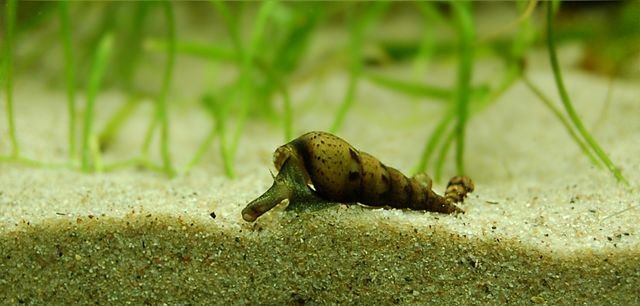
The giant river prawn, Macrobrachium rosenbergii, is a crustacean of great economic importance in global aquaculture. Its rapid growth, high market demand, and potential for farming in various regions make it a highly attractive species for aquaculture producers.
However, optimizing reproductive conditions to maximize the production of healthy larvae remains a challenge. Among the factors that influence this process, water salinity emerges as a crucial aspect.
A study published, in the Latin American Journal of Aquatic Research, by researchers from the Federal University of Paraná (Brazil) evaluated the effect of different salinities (0, 6, and 12 g L−1) on the embryogenesis of the giant river prawn, Macrobrachium rosenbergii.
The Importance of Salinity in Reproduction
Salinity is an environmental parameter that affects multiple aspects of the life of aquatic organisms, including their reproduction. Previous studies have shown that different shrimp species exhibit variable responses to salinity during their developmental stages. It has been reported that the highest egg production in parental groups of M. rosenbergii weighing between 40-50 g is obtained at a salinity of 5 g L−1.
In the case of Macrobrachium rosenbergii, although it is a freshwater species, its larvae require low salinity conditions for optimal development. Therefore, understanding how salinity influences embryogenesis is essential for improving farming techniques.
A Detailed Study on Embryogenesis
A recent study aimed to evaluate how different levels of salinity affect the developmental process of giant prawn embryos. To this end, fertilized eggs were exposed to three salinity levels: 0, 6, and 12 g/L.
The researchers carefully monitored the development of the embryos, taking samples every five days over a 23-day period. Using histological techniques, they analyzed the structural changes occurring in the eggs as the embryonic process progressed.
Key Results
The study’s results revealed significant differences in hatching time, egg size, and vacuole formation among the different salinity groups.
Stay Always Informed
Join our communities to instantly receive the most important news, reports, and analysis from the aquaculture industry.
The salinity level of 6 g/L showed the best results. Embryos exposed to this concentration hatched earlier, exhibited optimal egg size, and had adequate vacuole formation. This suggests that a salinity of 6 g/L favors the embryonic development of the giant prawn.
Implications for Aquaculture
The results of this study have important practical implications for the aquaculture industry. By identifying the optimal salinity for embryogenesis, producers can adjust incubation conditions to improve the efficiency and productivity of their operations.
Moreover, this knowledge contributes to a better understanding of the biological requirements of the giant prawn, which can lead to the development of more sustainable and responsible farming strategies.
Conclusions
“The salinity treatment of 6 g L−1 allowed for greater egg growth, a smaller vacuole area, and a lower ratio between egg size and vacuole area, resulting in the initiation of hatching on day 15 of the experimental period and complete hatching on day 20 at an average temperature of 28°C,” the researchers conclude.
Salinity is a critical factor in the successful reproduction of the giant prawn. The study demonstrated that a salinity level of 6 g/L significantly favors the embryonic development of this species. These findings contribute to a better understanding of the environmental requirements of the giant prawn and provide valuable information for optimizing farming practices.
Future research should delve deeper into the physiological mechanisms involved in the embryos’ response to salinity, as well as explore the impact of other environmental factors in combination with salinity.
Reference (open access)
Rodrigues dos Santos, Joel, Volkweis Zadinelo, Izabel, Mauerwerk, Marlise Teresinha, Ronnau, Milton, & Cupertino Ballester, Eduardo Luis. (2024). Histological analysis of Macrobrachium rosenbergii (de Man) eggs incubated in different salinities. Latin american journal of aquatic research, 52(3), 396-403. https://dx.doi.org/10.3856/vol52-issue3-fulltext-3107
Editor at the digital magazine AquaHoy. He holds a degree in Aquaculture Biology from the National University of Santa (UNS) and a Master’s degree in Science and Innovation Management from the Polytechnic University of Valencia, with postgraduate diplomas in Business Innovation and Innovation Management. He possesses extensive experience in the aquaculture and fisheries sector, having led the Fisheries Innovation Unit of the National Program for Innovation in Fisheries and Aquaculture (PNIPA). He has served as a senior consultant in technology watch, an innovation project formulator and advisor, and a lecturer at UNS. He is a member of the Peruvian College of Biologists and was recognized by the World Aquaculture Society (WAS) in 2016 for his contribution to aquaculture.



